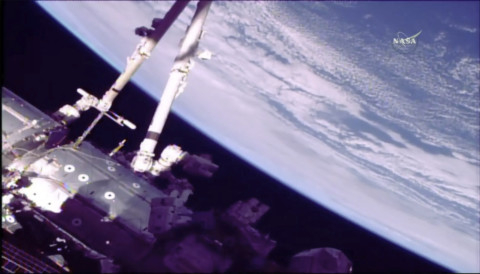
People concerned about robots taking away jobs might want to consider where it’s already happened. Machines with varying levels of intelligence have quietly taken over the most glamorous, coveted and admirable job in the world — space exploration.
It’s not that people can’t still be astronauts — it’s just there aren’t nearly enough jobs for all the people with the desire and ability to do it. And in terms of gathering data, we can’t catch up to the robots, which have in recent years been plunging beneath Jupiter’s thick cloud cover and exploring the exotic moons of Saturn with their methane lakes and roiling ice geysers. At more than 11 billion miles (17.7 billion km) from home, the unmanned space probe Voyager 1 has finally reached the edge of the sun’s “atmosphere” of solar wind particles and sampled true interstellar space.
Perhaps human space flight will start to take a cue from Elon Musk’s roadster now playfully speeding away on an orbit around the sun. In the future, going into space might become less of a solemn duty carried out by a hand-picked few, and more of an adventure, done both for learning and fun. This will take some attitude adjustment, given that the United States has been the traditional leader in space exploration, and we are a puritanical people, deeply suspicious of fun.
Robots didn’t take over space in any sort of hostile way. It’s still the people who are doing the exploration, using technology to boldly go to places with toxic atmospheres, crushing pressure, deadly X-rays, and extreme temperatures.
We biological beings are the ones whose curiosity drives the missions. “I’ve explored Pluto and the distant reaches of the universe from the comfort of my living room,” said Tod Lauer, an astronomer with the National Optical Astronomy Observatory in Arizona. “We can make the decisions and judgements remotely. We can make new missions based on what we’ve learnt.” When their missions end, robots go without question or complaint. The Cassini spacecraft collected some final data as it plunged to its demise in Saturn’s atmosphere.
That said, Lauer added that it would be fun to go into space. And even more fun than going into space would be going to Mars. Getting to our neighbouring planet isn’t just Musk’s dream — it’s the destination recommended by the National Academy of Sciences. In a 2014 report on the future of space flight, a panel of experts identified Mars as the most reasonable new place Nasa could send humans to.
Meanwhile, robotic missions will help answer the big questions. Scientists are still hoping to learn more about how our solar system formed. The search for alien life continues, boosted by the surprise finding that there are seas with the potential for harbouring life on Saturn’s moon Enceladus, as well as on Jupiter’s Europa. And now instead of just nine planets, we have eight planets and scores of other worlds out beyond Pluto — Makemake, Quaoar, Sedna and Varuna, to name a few. It’s human nature to want to see what’s out there, even if we can’t go in the flesh.
Commercial vehicles such as SpaceX’s Falcon Heavy, which launched the spacefaring roadster, will probably figure into the quest, since there’s a shortage of powerful rockets and no shortage of ideas for missions that need to be lofted far into space. Scientists have drawn up plans for potential missions to look closer at those distant moons of Jupiter and Saturn for signs of life, and there are plans for exploring Uranus and Neptune, which hold particular fascination since astronomers have found many bodies like them in other solar systems.
Perhaps these missions will be long ago accomplished by the time that car is predicted to swing close enough to be visible from Earth — roughly estimated to be around 2073. If history is any guide, we and our robots will still be exploring, launching missions to answer new questions that nobody has yet thought to ask.
— Bloomberg
Faye Flam is a Bloomberg View columnist.








